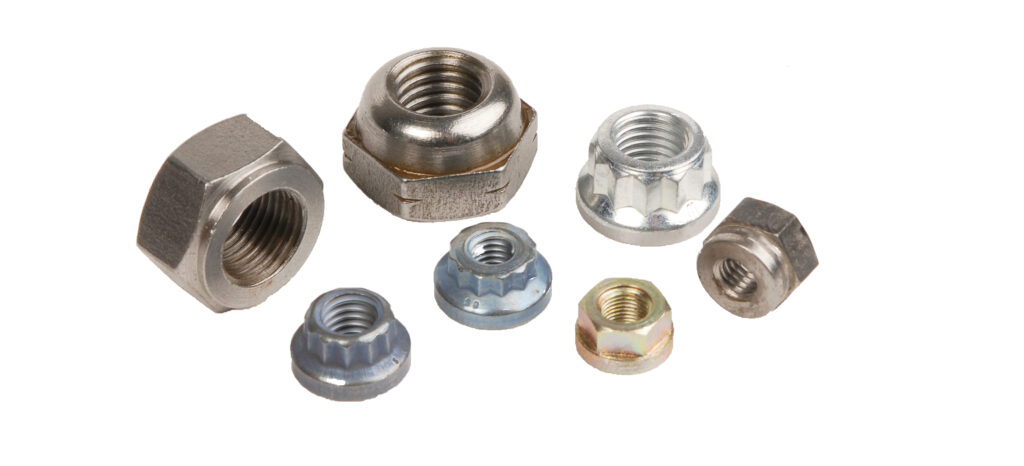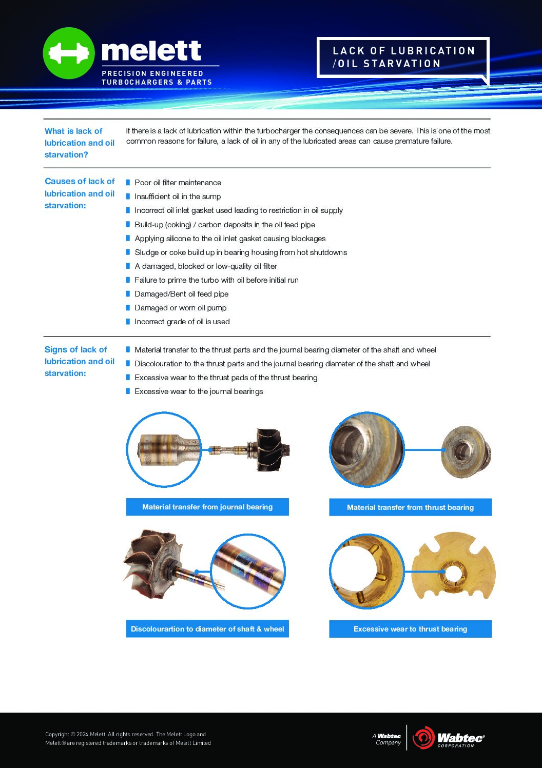Common turbo failure – loose shaft nut
Loose shaft nut
In a turbocharger assembly, a shaft nut holds the compressor wheel and other rotor group parts onto the shaft. The shaft nut is a precision machined part, which must be tightened to a specific torque. Shaft nuts are normally left-hand thread unless the rotor parts are reverse rotation. A shaft nut can also be referred to as a ‘locknut’ or an ‘impeller locknut’.
Turbochargers are precision engineered and designed to operate at speeds of up to 360,000 rpm, and reach temperatures up to 850°C in diesel applications and up to 1050°C in petrol applications. Operating under such extreme conditions, it is easy to see how failures can occur and how misdiagnosis can happen. If there is any kind of resistance or locking up within the rotor, the centrifugal force/inertia will continue and the shaft nut will come loose.
A loose shaft nut can result in catastrophic damage to the compressor wheel within seconds of the turbocharger commencing operation. To help you identify these failures when repairing, below we have highlighted the causes and the signs of damage caused by a loose shaft nut.

How are the shaft nuts are secured?
At Melett’s UK based CHRA assembly and turbo production facility, there are strict guidelines and procedures for the shaft nut tightening operation. Each model has its own specified torque setting and instructions to be carried out by our experienced CHRA assembly team.
Our tightening procedure is:
1. Apply the required setting torque
2. Loosen the shaft nut
3. Tighten up to the specified torque. This could be a final torque or a pre-torque with an added angle to create the correct amount of tension between the shaft nut and the shaft
With this tightening procedure and extensive operator training, here at Melett we have made a loose shaft nut a highly unlikely cause of turbo failure.
Causes of loose shaft nuts:
- Overspeeding causes excessive radial expansion of the compressor wheel but shortens its length. This relaxes the tension on the shaft, and the shaft nut begins to loosen. Click here to view our overspeeding help guide.
- Scoring to bearings, potentially caused by oil contamination or another failure mode, allows the compressor wheel to rub and ‘stall’ against the housing, eventually loosening the shaft nut. Click here to view our oil contamination help guide.
- Contamination of new oil whilst servicing (accidental)
- Foreign object damage to the compressor and/or turbine wheel puts the turbo out of balance. This allows it to rub against the housing, loosening the shaft nut. Click here to view our foreign object damage help guide.
- In the vast majority of turbochargers, the shaft nut thread direction is opposite to the direction of rotation on the shaft. If the compressor wheel rotates clockwise, the shaft nut threads should be left-handed – if this is not the case the nut has the potential to become loose during operation.
- A blockage in the oil feed pipe can cause the bearing system to ‘grab’ onto the shaft, preventing it from rotating, this in turn, causes the shaft nut to loosen. View our insufficient lubrication help guide for more details.
Signs of loose shaft nuts:
- Noise from the turbo during operation
- Loss of performance
- Chipping to the compressor blades
- Pitting around the compressor inlet
- Pitting on the compressor blades
- Burst wheel

Preventing turbo failure caused by loose shaft nuts:
- Preventing failure from a loose shaft nut is not straight forward. The only way to prevent issues is to keep the engine in good condition and correctly install the turbocharger.
- Always change the oil and filter when fitting a turbocharger, using the correct grade specified by the vehicle manufacturer.
- Use the correct torque settings on the shaft nut. Please see the Melett procedure above for more details. Torque settings can be found in the printed Melett Parts Catalogue.

For further information on this or other topics, please contact Melett Technical Support – melett_sales@wabtec.com.



